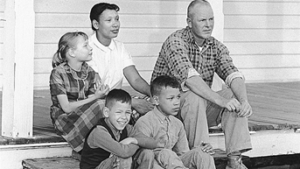Miscegenation (interbreeding between races) was against the law from 1661 up until Loving v Virginia in 1967.
M Many people with an interest in United States mixed-race relations would know that 1967 represented a first decision for peop le of mixed-race in the United States. Certainly 1967 is an important step because it is when the Supreme Court’s ruling in the case of Loving v. Virginia overturned the anti-miscegenation laws in the remaining 16 states that still had them. We must go back 306 years to 1661 to the colony (at that time) of Maryland when they codified the first statute against miscegenation (interbreeding between races). These laws were enacted, in one form or another, up until the passing of Virginia’s Racial Integrity Act of 1924 (Pictured). In fact, these laws were so well regarded by some colonialists around the world that thought was given to adopting them, particularly in Hong Kong where Chinese-Western intermarriage was commonplace. After the passing of Virginia’s Racial Integrity Act, anti-miscegenation laws were either be upheld or overturned until 1967, when Loving (pictured) vs Virginia took the day.
le of mixed-race in the United States. Certainly 1967 is an important step because it is when the Supreme Court’s ruling in the case of Loving v. Virginia overturned the anti-miscegenation laws in the remaining 16 states that still had them. We must go back 306 years to 1661 to the colony (at that time) of Maryland when they codified the first statute against miscegenation (interbreeding between races). These laws were enacted, in one form or another, up until the passing of Virginia’s Racial Integrity Act of 1924 (Pictured). In fact, these laws were so well regarded by some colonialists around the world that thought was given to adopting them, particularly in Hong Kong where Chinese-Western intermarriage was commonplace. After the passing of Virginia’s Racial Integrity Act, anti-miscegenation laws were either be upheld or overturned until 1967, when Loving (pictured) vs Virginia took the day.

It is interesting to note that the first recorded child of mixed Afro-European ancestry was born in the U.S. in 1620! So, we can see that there is a long and historical struggle for mixed-race people in the United States, predating the Loving ruling by nearly 350 years.
[/cm

